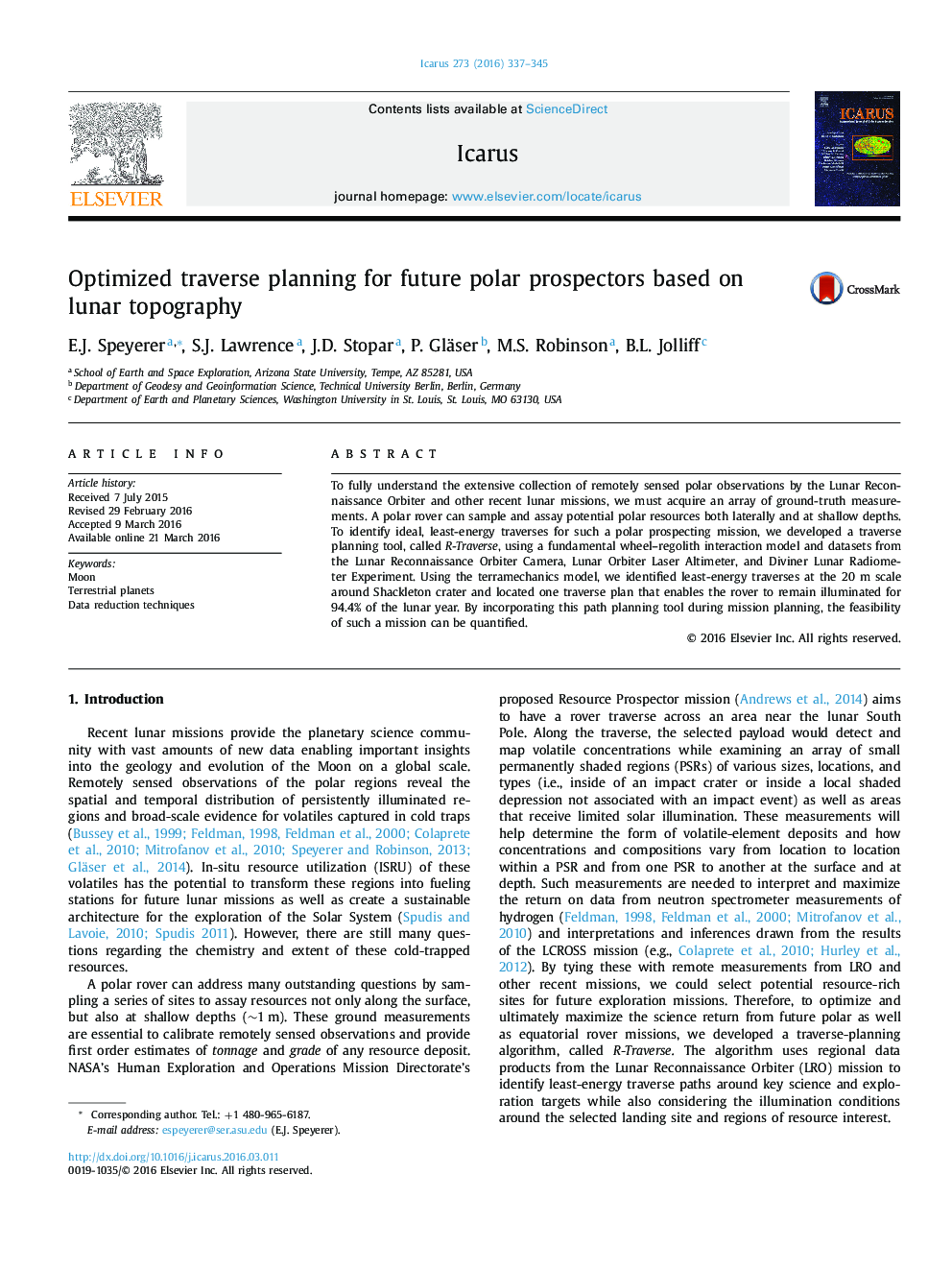| Article ID | Journal | Published Year | Pages | File Type |
|---|---|---|---|---|
| 8135192 | Icarus | 2016 | 9 Pages |
Abstract
To fully understand the extensive collection of remotely sensed polar observations by the Lunar Reconnaissance Orbiter and other recent lunar missions, we must acquire an array of ground-truth measurements. A polar rover can sample and assay potential polar resources both laterally and at shallow depths. To identify ideal, least-energy traverses for such a polar prospecting mission, we developed a traverse planning tool, called R-Traverse, using a fundamental wheel-regolith interaction model and datasets from the Lunar Reconnaissance Orbiter Camera, Lunar Orbiter Laser Altimeter, and Diviner Lunar Radiometer Experiment. Using the terramechanics model, we identified least-energy traverses at the 20 m scale around Shackleton crater and located one traverse plan that enables the rover to remain illuminated for 94.4% of the lunar year. By incorporating this path planning tool during mission planning, the feasibility of such a mission can be quantified.
Related Topics
Physical Sciences and Engineering
Earth and Planetary Sciences
Space and Planetary Science
Authors
E.J. Speyerer, S.J. Lawrence, J.D. Stopar, P. Gläser, M.S. Robinson, B.L. Jolliff,
